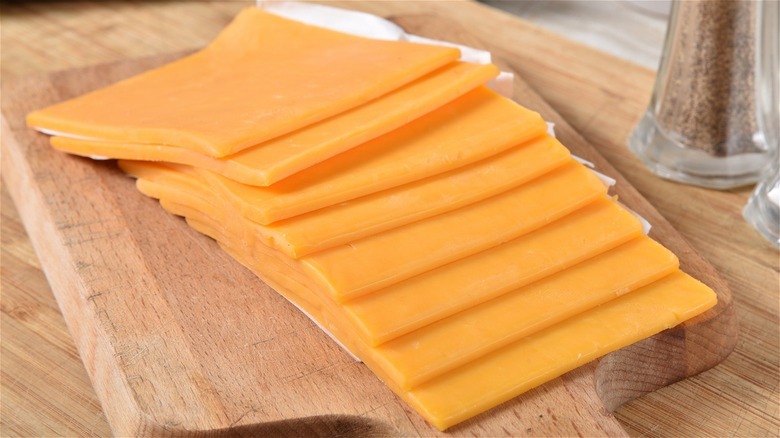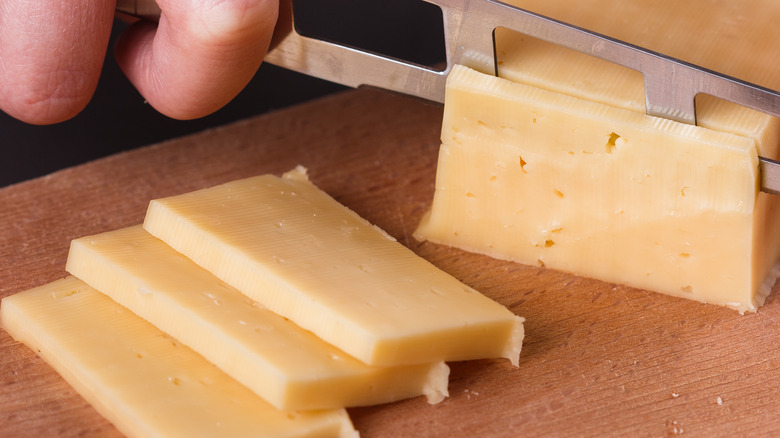You're Probably Slicing Cheese All Wrong
Eating cheese might be a lot sloppier if we could just approach it like stereotypical mice. With our unimposing high-pitched squeals, we might be really reckless. Just imagine indiscriminately gnawing holes through finely crafted cheddar and scurrying away with stolen bites into the unknown abyss beneath the floorboards.
But as makers and refined appreciators of cheese, humans have to be far more sophisticated when handling it. We can't simply funnel endless quantities of cheese into our mouths like a hyperactive shovel – we have to demonstrate restraint and elegance, understanding the need for suitable accompaniments like fruit, dips, and crackers. We also have to consider the obvious: how to slice cheese.
Sadly, it's still not socially acceptable to be seen squashing entire lumps of cheese into our mouths. However, this seemingly straightforward consideration is actually a little more detailed than we've ever believed. It turns out that some of our favorite cheeses (including cheddar, brie, and goat, per YouGov America) should actually be cut in specific ways. There are even different knives depending on the type of cheese. So there's a good chance that even if you're not just using your teeth to cut the cheese you hastily stashed under floorboards, you're still slicing it the wrong way.
There are several correct methods of slicing cheese
You may well have blundered through your whole life by just slashing at chunks of cheese like an Alfred Hitchcock character. And if so, it turns out you've been doing it all wrong. According to a press release for Fromage from Europe, different cheeses should be sliced in different ways, aiding not only presentation but longevity.
Cheeses cut from wheel slices (such as Beaufort) or goat's cheese logs should be chopped into straight slices or discs, whereas square, round, spherical, and pyramid-shaped cheeses (including camembert, edam, and valençay) are best sliced like a pie. If your cheese has a thin or pointy end of a wedge (like brie) or is molded into a half-moon, cut it into slices resembling sun rays by positioning your knife at the center of the thinnest edge.
To achieve these prestige cuts, you need the correct knife. For soft cheese, such as brie and camembert, Castello advises using a knife with holes or a straight, thin blade. Either of these reduces the chances of the cheese sticking to the knife. Cheese cleavers should be used for tougher varieties, which, as the Encyclopedia of Food and Health states, include cheddar and Parmigiano, per ScienceDirect.

